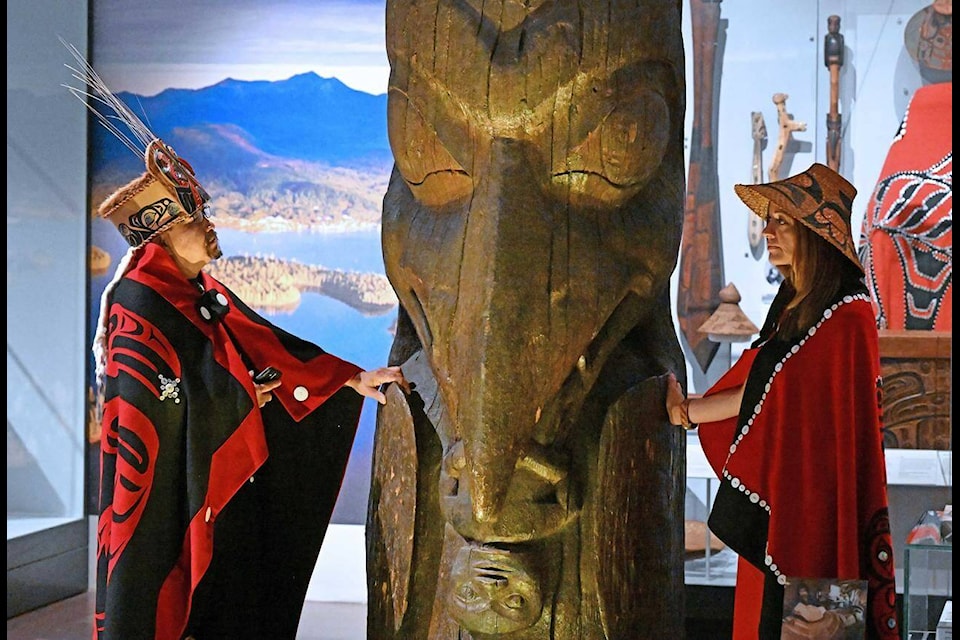A memorial totem pole is being readied for the journey from the National Museum of Scotland in Edinburgh back to where it was taken from in the Nass Valley nearly a century ago.
After carefully being packaged for shipping, it will be flown across the Atlantic in a Canadian military aircraft for an arrival ceremony planned for Sept. 29 at the Nisga’a Museum in Lax̱g̱altsʼap.
A Nisga’a delegation was in Scotland last week as preparations began. It is the second time in a year the Nisga’a have visited Scotland to arrange for the pole’s return.
A delegation two decades ago asking for the pole’s return met with disappointment after Scottish officials felt the pole was too fragile for shipment.
The pole was commissioned in 1860 to honour a member of the House of Ni’isjoohl from the Ganada (frog clan), who was next in line to be chief but died protecting his family and nation, the Nisga’a Lisims government said in a statement.
It was taken without consent in 1929 by anthropologist Marius Barbeau and sold to the Royal Scottish Museum (now known as the National Museum of Scotland).
Amy Parent, a member of the nation and Canada Research Chair in Indigenous education and governance, said she expects to feel a deep sense of peace when the pole that’s alive with the spirit of a relative returns to the Nass Valley.
A statement from Chris Breward, director of National Museums Scotland, said museum staff have been planning for the “complex task” of carefully lowering the pole in what is the first return of its type by an institution in the United Kingdom.
Parent and the six other members of the Nisga’a team working on the return of the pole were recognized with an award of merit by the British Columbia Historical Federation in July.
“Through their steadfast determination to request the rematriation of the Ni’isjoohl memorial pole to Nisga’a territory without conditions, the team are cutting the path and setting the bar for the return of stolen cultural belongings and ancestors in British Columbia,” a statement from the federation indicated.
In negotiations leading up to the Nisga’a treaty of 2000 and since then, Nisga’a people have worked to identify and return cultural artifacts removed from the Nass Valley through various means since the arrival of European missionaries in the mid-1800s.
Affirmation of the role artifacts play in Nisga’a life is contained in Chapter 17 of the treaty.
With files from The Canadian Press
